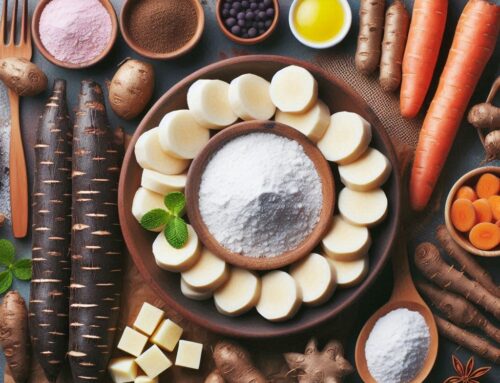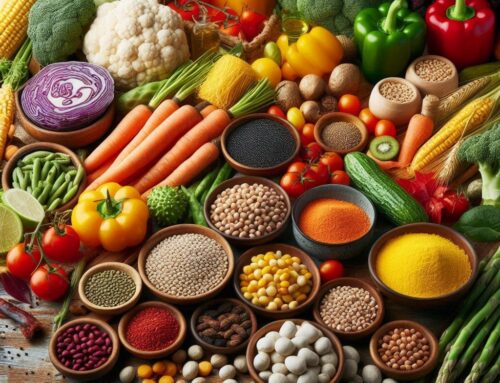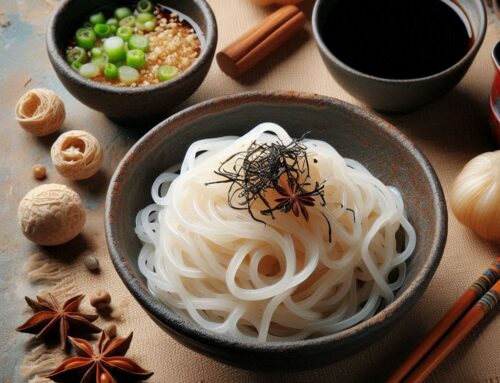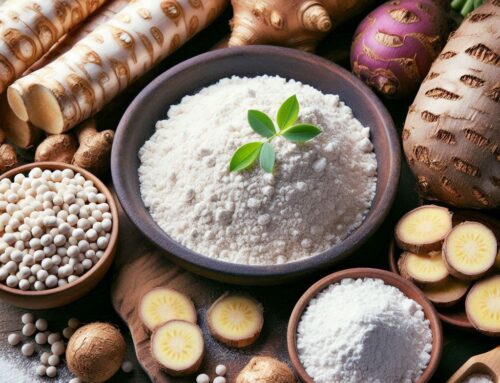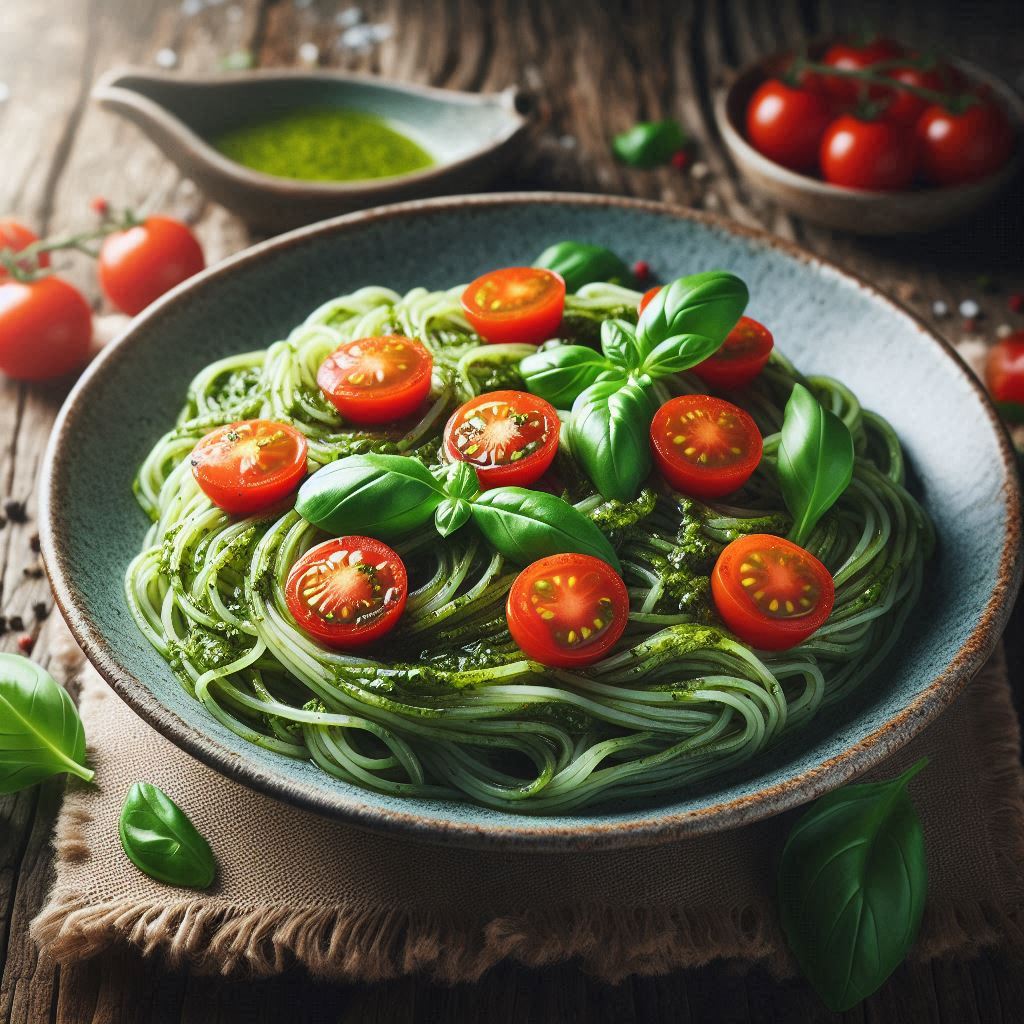
Introduction: Why Choose Konjac Noodles for Your Meal Prep?
When it comes to meal prep, choosing ingredients that support your health goals is essential. Konjac noodles have emerged as a popular choice for those seeking a nutritious and satisfying alternative to traditional pasta. These noodles are made from the root of the konjac plant, which is native to Asia and has been used in cooking for centuries. One of the primary benefits of konjac noodles is their incredibly low calorie content, making them an excellent option for anyone looking to reduce their caloric intake without sacrificing flavor or texture.
Konjac noodles are not only low in calories but also high in dietary fiber, particularly glucomannan. This soluble fiber can aid digestion and promote feelings of fullness, helping you manage portion sizes more effectively during meal prep. Additionally, these noodles are gluten-free and suitable for various dietary needs, accommodating those who follow vegan or keto diets.
Incorporating konjac noodle recipes into your meal prep can be both simple and versatile. From stir-fries to soups and salads, these noodles absorb flavors well while providing a satisfying base for any dish. As you explore healthy meal prep ideas with konjac noodles, you’ll discover a world of culinary possibilities that align with your health objectives without compromising on taste or enjoyment.
The Nutritional Benefits of Konjac Noodles and Pesto
Konjac noodles, often celebrated for their low-calorie and low-carbohydrate profile, are a fantastic addition to any health-conscious diet. Made from the root of the konjac plant, these noodles are rich in glucomannan fiber, a type of soluble fiber that offers numerous health benefits. Glucomannan is known for its ability to promote feelings of fullness, which can aid in weight management by reducing overall calorie intake. Moreover, it supports digestive health by acting as a prebiotic, feeding beneficial gut bacteria.
For those following a ketogenic diet, konjac noodles provide an excellent alternative to traditional pasta. Their keto-friendly nature means they can be enjoyed without disrupting ketosis, allowing individuals to maintain their low-carb lifestyle while still indulging in noodle-based dishes.
Pairing konjac noodles with pesto not only enhances flavor but also boosts nutritional value. Pesto is packed with healthy fats from olive oil and pine nuts and contains basil’s antioxidants and anti-inflammatory properties. Additionally, garlic in pesto contributes to heart health by potentially lowering cholesterol levels.
Together, konjac noodles and pesto create a nutritious meal that satisfies both taste buds and dietary goals. This combination offers a unique way to enjoy delicious food while reaping the benefits of essential nutrients and maintaining dietary preferences such as keto or low-calorie eating plans.
A Step-by-Step Guide to Preparing Perfect Konjac Noodles with Pesto
Konjac noodles, known for their low-calorie and gluten-free properties, are a fantastic base for a quick and healthy meal. When paired with a vibrant pesto sauce, they become an irresistible dish that’s easy to prepare. Here’s a step-by-step guide on how to cook konjac noodles and create the perfect pesto pairing.
Step 1: Preparing the Konjac Noodles
Start by opening the package of konjac noodles and draining them in a colander. Rinse thoroughly under cold water for about 2-3 minutes to remove any packing liquid odor. This is crucial for enhancing their taste. After rinsing, boil them in water for another 3 minutes to improve their texture.
Step 2: Making the Pesto Sauce
For an easy pesto sauce recipe, gather fresh basil leaves (about 2 cups), 1/2 cup of grated Parmesan cheese, 1/4 cup of pine nuts or walnuts, two garlic cloves, and about 1/2 cup of extra-virgin olive oil. In a food processor or blender, combine all ingredients except the olive oil and pulse until coarsely chopped. Then slowly add the olive oil while blending until smooth.
Step 3: Combining Noodles with Pesto
Drain the cooked konjac noodles thoroughly once more after boiling them. In a large pan over medium heat, add your prepared pesto sauce and gently warm it up—be careful not to overheat as this can alter its fresh flavor profile. Add the drained konjac noodles into the pan with warmed pesto sauce and toss until evenly coated.
Cooking Tips
To elevate your dish further, consider adding sautéed cherry tomatoes or grilled chicken pieces into your noodle mix for additional flavor and protein content. Remember that konjac noodles absorb flavors well; allowing them to sit briefly in your finished dish can enhance taste integration.
By following these steps on how to cook konjac noodles paired with this simple yet delicious pesto sauce recipe, you can enjoy an easy noodle preparation that’s both satisfying and nutritious!
Creative Variations to Spice Up Your Konjac Noodle Dish
When it comes to crafting a delicious and satisfying meal, konjac noodles offer a versatile base that can be transformed with endless creative variations. One of the simplest ways to elevate your konjac noodle dish is by incorporating different protein options. For a classic touch, consider adding sliced chicken breast, which not only enhances the flavor but also provides a hearty boost of protein. Simply marinate the chicken in soy sauce and ginger before tossing it into your stir fry for an Asian-inspired twist.
If you’re leaning towards a vegetarian meal variation, tofu is an excellent choice. Its ability to absorb flavors makes it perfect for soaking up sauces and spices used in your stir fry. Try pan-frying tofu cubes until golden brown before mixing them with your noodles for added texture and taste.
For those seeking more adventurous konjac noodle stir fry ideas, explore adding colorful vegetables such as bell peppers, snap peas, or broccoli florets. These not only add nutritional value but also create a visually appealing dish that’s as delightful to look at as it is to eat.
By experimenting with these protein options and vegetable combinations, you can transform simple konjac noodles into exciting meals that cater to various dietary preferences while ensuring each bite is bursting with flavor.
How to Store and Reheat Your Prepared Meals for Maximum Freshness
Meal prep can be a lifesaver for busy individuals, but ensuring your prepared meals maintain their freshness and flavor requires some strategic storage and reheating techniques. To start, proper meal prep storage tips are essential. Invest in high-quality airtight containers to keep your meals fresh for longer periods. Glass containers are particularly effective as they do not absorb odors or stains and are microwave-safe, making them ideal for reheating.
When it comes to specific ingredients like konjac noodles, understanding their shelf life is crucial. So, how long do konjac noodles last in the fridge? Typically, these noodles can last up to two weeks when stored in an airtight container with water that should be changed every couple of days to maintain their texture and taste.
Reheating methods also play a pivotal role in preserving the quality of your meals. For best taste, consider using an oven or stovetop instead of a microwave whenever possible. These methods help retain moisture and prevent meals from becoming rubbery or dry. If using a microwave is necessary due to time constraints, adding a small amount of water or broth before heating can help maintain moisture levels.
By following these guidelines on meal prep storage tips and selecting appropriate reheating methods, you can enjoy deliciously fresh meals throughout the week without compromising on flavor or quality.
Troubleshooting Common Issues When Cooking with Konjac Noodles and Pesto
Cooking with konjac noodles and pesto can be a delightful experience, but it sometimes presents challenges that can affect the dish’s overall quality. One common issue is dealing with soggy noodles. To fix soggy noodles, it’s crucial to rinse them thoroughly under cold water before cooking to remove their natural odor and excess moisture. After rinsing, dry them well using a paper towel or by gently squeezing them in a clean cloth. This step helps maintain their desired texture when added to your dish.
Another aspect to consider is balancing flavors in pesto sauce. Pesto is known for its vibrant taste, but achieving the perfect balance requires attention to detail. Start by using fresh basil leaves and high-quality olive oil as your base. Gradually add garlic, pine nuts, Parmesan cheese, and a pinch of salt while tasting along the way to ensure no single ingredient overpowers the others.
Avoiding common mistakes when cooking with these ingredients can make all the difference in your culinary creations. Overcooking konjac noodles is one such mistake; since they are already cooked during processing, they only need heating rather than prolonged cooking time. Additionally, be mindful of how much pesto you use—too much can overwhelm the delicate flavor of the noodles.
By addressing these issues thoughtfully, you can elevate your konjac noodle dishes with pesto into something truly delicious and satisfying every time you cook them.


